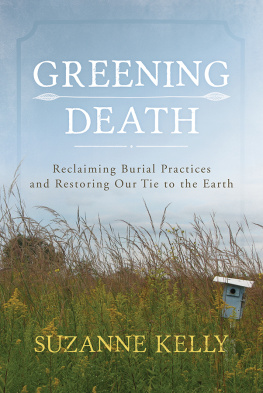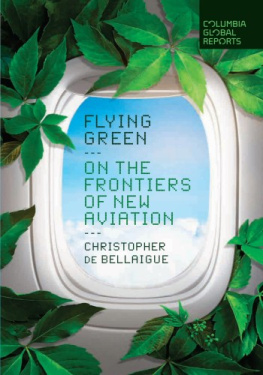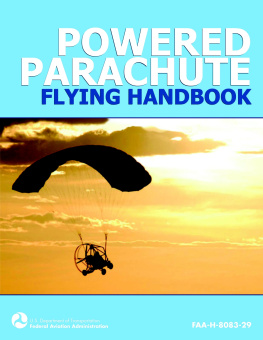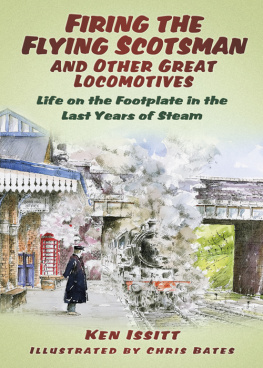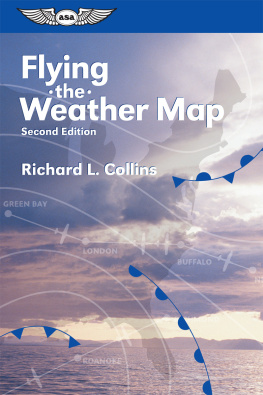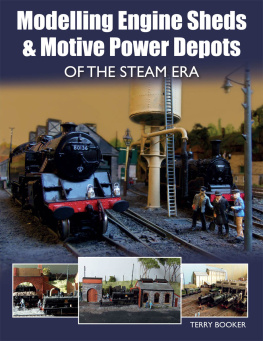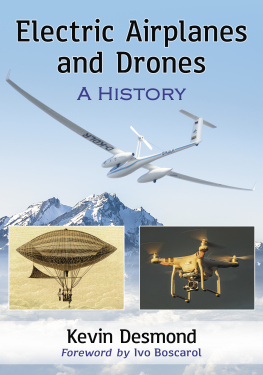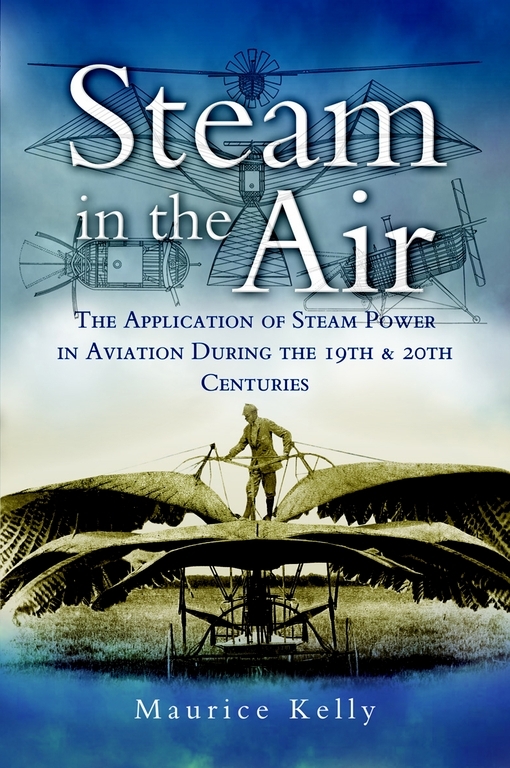Acknowledgements
The author would like to thank the following for their assistance in the preparation of this book:
Den Burchmore of the Airship Trust
Paul Carslake, Editor of The Engineer magazine for permission to reproduce line drawings
R.W. Carter, Curator of the Chard Museum, for details of the Stringfellow Collection housed in the museum
Hannah Cameron of Cameron Balloons Ltd, for information on airship technology etc.
Heloise Cates, for setting up the typescript and storing it on disk
Dr M.F.D. Diprose of the University of Sheffield Department of Electronic and Electrical Engineering
Ronald Gardner of the Training Section, Rolls-Royce Aero Engines, Bristol, for information concerning the replica Stringfellow steam aeroplane built by the Apprentices Association of the Company
K. Hyde, Librarian of the Shuttleworth Collection, for information about the Frost ornithopter and artifacts held at Old Warden
Philip Jarrett, aviation historian, for assistance with details of pioneer aircraft and also for reading the proofs
Nicholas Kelly, for encouragement and assistance
Andrew Nahum, Curator of the Aeronautical section at the Science Museum, South Kensington, for general assistance
Tris Pinkney, proprietor of Bilbys Caf, Chard, for details concerning the Rolls-Royce replica Stringfellow aeroplane and engine which are on permanent show there
The late Malcolm Taylor, for general assistance with the newspaper cuttings and entries over the years
Sqn Ldr Michael Townsend, great nephew of Edward Frost, who provided details of his great uncles work
Ronald Whitehouse, inventor, who gave the writer details of his steam power unit for aeronautical purposes
Thanks are also due to the Patent Office, the British Library, the Bank of England Archive Department, the BBC and the Somerset County Museum.
Introduction
T his book studies the use of steam as a method of propulsion in aviation, and the reasons behind the adoption of steam engines to provide lift and motion in the air. There is also information on the remaining artifacts in various museums around the world.
From a historical point of view, the use of steam engines in aviation was a necessity, for at first, during the nineteenth century, this type of power unit was the only source of energy available for the purpose. Some incredible lightweight machines were created by individuals such as John Stringfellow (1799 1883), and by firms like Ahrbecker, Son & Hamken of Stamford Street in London, during that time. Later, the steam engine became the preserve of aviation enthusiasts who were determined to demonstrate that aircraft could be made to fly successfully using external combustion engines (electricity and compressed air were also utilised). One of these enthusiasts was William J. Besler of the Besler Corporation of California, who took off from the San Francisco Bay Airdrome on 20 April 1933 to make a few circuits of the airfield in a Travelair biplane which was fitted with a monotube steam plant of his design. A number of pioneer experimenters put their minds to the problems of flight generally on the boundary of the nineteenth and twentieth centuries and most of these regarded the steam engine as the only real source of power to make their aircraft achieve sustained flight.
Appendix: Artifacts Preserved in Museums
The National Collection, The Science Museum, South Kensington, London
| i) Items known to have been deposited in the National Collection from Henson and Stringfellow by C.H. Alderson and P.Y. Alexander unless otherwise specified |
| INV.NO. 1907-28 | Henson and Stringfellow model of 1844/47 |
| INV.NO. 1907- | Eight model airscrews of different types used for thrust tests between 1844 and 1868. No inventory number on computer database |
| INV.NO. 1908-44 | Engine of 1844/47 model |
| INV.NO. 1908 | The engine and boiler of 1848. This was donated by John Heathcote Amory & Co. of Tiverton, Devon, but no inventory number is on the computer database |
| INV.NO. 1919-552 | Listed as gliding rail but possibly the launching apparatus that came with the model of 1848, donated in 1908 |
| INV.NO. 1919 | Engine and boiler of the triplane of 1868. Originally on loan from the Royal Aeronautical Society and now possibly returned |
| INV.NO. 1919 | The car, tail, two wings and four propellers from F.J. Stringfellows model biplane of 1866. Originally on loan from the Royal Aeronautical Society |
| INV.NO. 1926-560 | Replica of the 1848 Stringfellow model (N.B. The original model was donated in 1908 but it was found to have so deteriorated that any reconstruction would have been unsatisfactory.) |
| ii) Item from Frost ornithopter |
| INV.NO. 1925-407 | Ornithopter wing from 1902 |
| iii) Item from Thomas Moys experiments |
| INV.No. 1925-751 | Model of Moys machine, now at Blyth House |
| iv) Items from the Sir Hiram Maxim Collection |
| INV.No 1896-98A | Model of Maxims machine |
| INV.No 1896-98B | Original engine from Maxims machine, now at Wroughton Reserve Collection |
| INV.No 1896-98C | Original 17.83 ft propeller from the Maxim machine, now at Wroughton Reserve Collection |
| INV.No 1913-429 | Ten model propellers, now at Blyth House |
| INV.No 1922-266 | Assortment of struts, wire bracing, fabric covering etc. and a pulley from the original Maxim machine |
| INV.No 1926-459 & 460 | Three 2 ft diameter propellers |
In addition to the above there are photographs, letters and documents pertaining to the early pioneers.
The Somerset County Museum, Taunton
- i) INV.No 59/2003/1 The Stringfellow airship engine
- ii) INV.No 59/2003/2 The boiler for the Stringfellow airship engine
These two items were donated by John Stringfellows grandaughter, Mrs Marshall in 1940. They were cleaned and conserved by H.C. Stevens of Avimo Ltd, Instrument makers of Taunton, in 1941 and an account of this restoration is given in the Journal of the Somerset Archaeological & Natural History Society, July 1941. There is a box of documents concerning John Stringfellow and Sir Hiram Maxim in the Local Studies Library in Taunton.
The Chard Museum, Chard, Somerset
This museum houses a number of items concerned with the work of Henson and Stringfellow for most of their experiments were conducted in the locality.
- i) Model of the 1868 triplane
- ii) Model of the 1848 monoplane
- iii) Model of a 20 ft wingspan aeroplane made to the patent design
Bilbys Cafe Chard
The replica of the Stringfellow aeroplane and the engine built by Rolls-Royce apprentices are on display at this location
The Shuttleworth Collection, Old Warden Aerodrome, Dunstable, Bedfordshire
The Frost ornithopter steam engine constructed by Ahrbecker, Son & Hamken of Stamford Street, London, for the 1877 machine is housed here.
The National Collection of the United States of America, The Smithsonian Museum, Washington DC
| i) INV.No 1889-1 | The engine constructed by John Stringfellow for the First Aeronautical Exhibition at the Crystal Palace in 1868, purchased by Professor Samuel Pierpoint Langley in 1887 and donated two years later |






